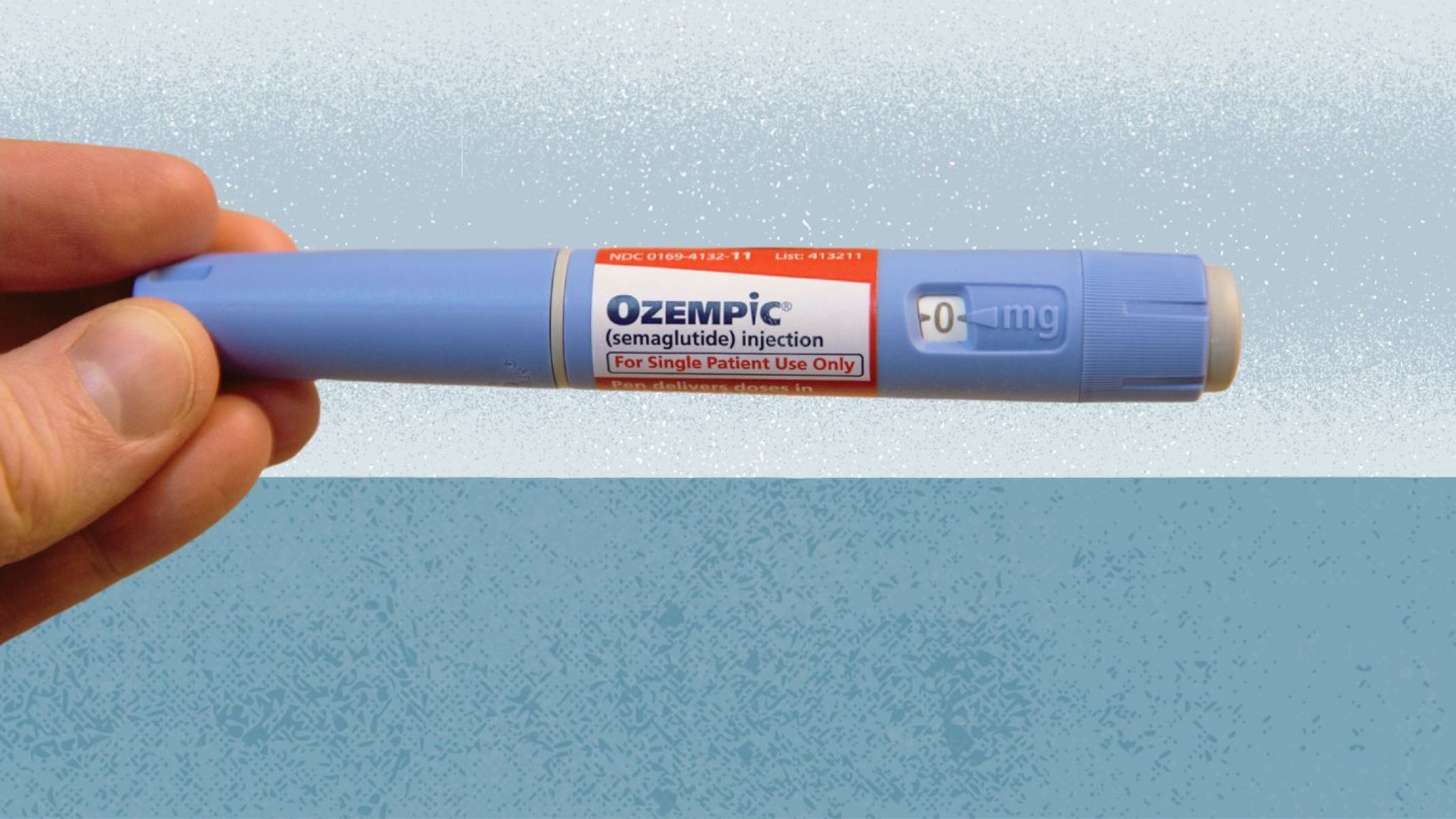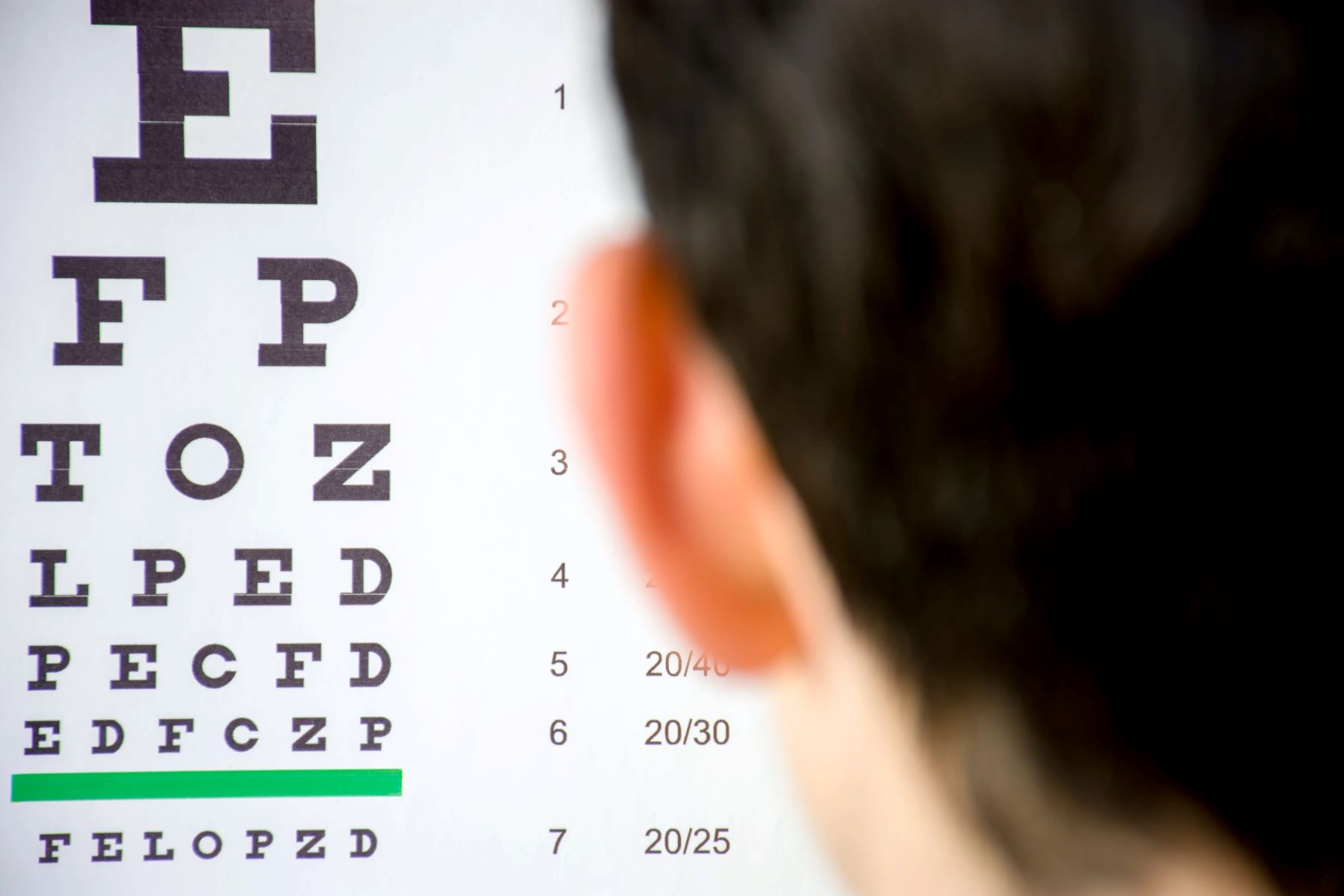Home>Health and Wellness>Why Clinical Correlation Is Essential In Lab Test Reports


Health and Wellness
Why Clinical Correlation Is Essential In Lab Test Reports
Published: February 1, 2024
Learn why clinical correlation is crucial in interpreting lab test reports for better health and wellness outcomes. Understand the importance of integrating lab results with patient history and symptoms.
(Many of the links in this article redirect to a specific reviewed product. Your purchase of these products through affiliate links helps to generate commission for Regretless.com, at no extra cost. Learn more)
Table of Contents
Introduction
When it comes to healthcare, the role of diagnostic tests cannot be overstated. These tests provide crucial insights into a person's health, aiding in the early detection, diagnosis, and monitoring of various medical conditions. From blood tests to imaging studies, diagnostic tests offer valuable information that is instrumental in guiding treatment decisions and evaluating the effectiveness of interventions.
While the results of lab tests and imaging studies are undoubtedly valuable, it is essential to recognize that they are not standalone entities. In fact, these reports are just one piece of the diagnostic puzzle. To truly comprehend the significance of these findings and their implications for a patient's health, it is imperative to consider them within the broader context of the individual's medical history, symptoms, and overall clinical presentation.
The process of integrating the findings from diagnostic tests with the patient's clinical scenario is known as clinical correlation. This crucial step bridges the gap between raw test data and meaningful clinical interpretation, enabling healthcare providers to make well-informed decisions that directly impact patient care.
In the following sections, we will delve into the nuances of lab test reports, explore the importance of clinical correlation, address the challenges associated with this practice, and outline strategies for effective clinical correlation. By gaining a comprehensive understanding of these concepts, healthcare professionals can enhance the quality of care they provide, ultimately leading to improved patient outcomes and satisfaction.
Read more: How To Test A Starter
Understanding Lab Test Reports
Lab test reports serve as vital tools in the diagnostic process, offering quantitative and qualitative data that can shed light on a patient's health status. These reports encompass a wide array of tests, including blood tests, urine analysis, imaging studies, genetic assays, and more. Each test is designed to assess specific aspects of a patient's physiology, providing valuable insights into their overall health and potential medical conditions.
Blood tests, for instance, can reveal essential information about a patient's blood cell count, electrolyte levels, organ function, and the presence of specific biomarkers indicative of various diseases. Urine analysis, on the other hand, can detect abnormalities related to kidney function, urinary tract infections, and metabolic disorders. Imaging studies, such as X-rays, MRIs, and CT scans, offer detailed visualizations of internal structures, aiding in the identification of anatomical abnormalities and pathological conditions.
These reports are typically structured to present the test results alongside reference ranges, which indicate the normal values for the tested parameters. Deviations from these reference ranges can signal potential health issues, prompting further investigation and clinical correlation. Additionally, some reports may include interpretive comments from the laboratory, providing context and highlighting noteworthy findings that warrant attention.
Understanding lab test reports requires a comprehensive grasp of the tested parameters, their physiological significance, and the potential implications of abnormal findings. Healthcare providers must possess the expertise to decipher these reports accurately, recognizing the nuances of each test and its relevance to the patient's clinical condition.
Moreover, the interpretation of lab test reports should not occur in isolation. Instead, it should be integrated with the patient's medical history, symptoms, physical examination findings, and other diagnostic data. This holistic approach ensures that the test results are contextualized within the broader scope of the patient's health, enabling the formulation of well-informed clinical decisions.
In essence, lab test reports are invaluable tools that provide objective data for assessing a patient's health status. However, their true significance is realized when they are comprehensively interpreted in conjunction with the patient's clinical context, underscoring the essential role of clinical correlation in optimizing patient care.
Importance of Clinical Correlation
Clinical correlation stands as a cornerstone of effective medical practice, holding immense significance in the accurate interpretation of lab test reports and diagnostic findings. Its importance stems from the fact that raw test data, although informative, does not exist in a vacuum. Instead, it must be seamlessly integrated with the patient's clinical history, presenting symptoms, physical examination findings, and other diagnostic results to derive meaningful insights.
The value of clinical correlation becomes apparent in its ability to provide a comprehensive understanding of a patient's health status. By juxtaposing test results with the broader clinical context, healthcare providers can discern whether abnormalities in the reports are indicative of an underlying medical condition or simply represent benign variations. This differentiation is crucial in preventing misdiagnosis and unnecessary interventions, thereby safeguarding patient safety and well-being.
Moreover, clinical correlation plays a pivotal role in guiding treatment decisions. It empowers healthcare providers to tailor their approach based on a holistic understanding of the patient's condition, ensuring that interventions are aligned with the individual's unique health profile. For instance, in cases where lab test results suggest a potential diagnosis, clinical correlation allows for the validation of these findings through the lens of the patient's symptoms and medical history. This validation process serves to minimize diagnostic errors and optimize the selection of appropriate treatment modalities, ultimately enhancing patient outcomes.
Furthermore, clinical correlation fosters a patient-centered approach to care. By considering the patient's clinical narrative alongside diagnostic data, healthcare providers can engage in shared decision-making, involving the patient in the interpretation of their test results and the formulation of a care plan. This collaborative process not only promotes patient empowerment but also ensures that the chosen interventions align with the patient's preferences, values, and unique circumstances.
In essence, the importance of clinical correlation lies in its capacity to transform raw test data into actionable clinical insights. By harmonizing objective findings with the subjective elements of a patient's health, clinical correlation serves as a linchpin in the delivery of personalized, evidence-based care. Its role in minimizing diagnostic errors, optimizing treatment strategies, and fostering patient engagement underscores its indispensable nature in modern healthcare practice.
Challenges in Clinical Correlation
Navigating the landscape of clinical correlation presents healthcare providers with a myriad of challenges that demand astute observation, critical thinking, and adept decision-making. These challenges, while inherent to the practice of clinical correlation, underscore the complexities involved in harmonizing objective test data with the subjective elements of a patient's clinical presentation.
One of the primary challenges in clinical correlation arises from the inherent variability and complexity of human physiology. The human body exhibits a remarkable degree of individuality, with diverse genetic backgrounds, lifestyle factors, and environmental influences shaping the manifestation of health and disease. This inherent variability can manifest as subtle deviations from established norms, making it challenging to discern between benign variations and clinically significant abnormalities in lab test reports. Healthcare providers must navigate this intricacy with precision, ensuring that their interpretations are rooted in a deep understanding of the patient's unique physiological nuances.
Additionally, the multifaceted nature of clinical data poses a significant challenge in the process of correlation. Patients often present with complex medical histories, comorbidities, and overlapping symptoms, creating a rich tapestry of clinical information that must be carefully woven together. Integrating this diverse array of data with the findings from lab tests demands a comprehensive understanding of the interplay between various health factors, necessitating thoroughness and attention to detail.
Furthermore, the evolving landscape of medical knowledge and diagnostic technologies introduces another layer of complexity to clinical correlation. As medical science advances and new diagnostic tools emerge, healthcare providers are tasked with staying abreast of the latest developments and refining their interpretive skills to accommodate these innovations. This ongoing pursuit of knowledge and adaptability is essential in ensuring that clinical correlation remains aligned with the cutting edge of medical practice, driving optimal patient care outcomes.
Moreover, time constraints and resource limitations pose practical challenges to the seamless implementation of clinical correlation. In a fast-paced healthcare environment, providers must efficiently synthesize a wealth of clinical and diagnostic data to arrive at accurate interpretations and treatment decisions. The need to balance thoroughness with expediency underscores the demanding nature of clinical correlation, highlighting the importance of streamlined processes and effective utilization of resources.
In essence, the challenges in clinical correlation underscore the intricate nature of integrating objective test data with the subjective elements of patient care. Addressing these challenges demands a nuanced approach, characterized by diligence, adaptability, and a commitment to delivering high-quality, patient-centered care. By acknowledging and navigating these challenges, healthcare providers can fortify the practice of clinical correlation, ultimately enhancing diagnostic accuracy and treatment efficacy.
Strategies for Effective Clinical Correlation
-
Comprehensive Patient Assessment: Begin by conducting a thorough assessment of the patient's medical history, current symptoms, and physical examination findings. This holistic approach provides essential context for interpreting lab test results within the framework of the patient's unique health profile.
-
Interdisciplinary Collaboration: Foster collaboration with specialists from diverse medical disciplines, leveraging their expertise to gain multifaceted insights into the patient's condition. By integrating perspectives from various healthcare professionals, a comprehensive understanding of the clinical scenario can be achieved, enriching the process of clinical correlation.
-
Utilization of Clinical Decision Support Tools: Leverage advanced clinical decision support tools and resources to aid in the interpretation of lab test reports. These tools can offer evidence-based guidelines, algorithms, and predictive models that augment the process of clinical correlation, enhancing diagnostic accuracy and decision-making.
-
Patient Engagement and Shared Decision-Making: Engage the patient in the interpretation of their lab test results, fostering a collaborative approach to care. By involving the patient in shared decision-making, healthcare providers can gain valuable insights into the patient's perspective, values, and preferences, enriching the process of clinical correlation and ensuring patient-centered care.
-
Continual Education and Training: Stay abreast of the latest advancements in medical science and diagnostic technologies through ongoing education and training. This proactive approach equips healthcare providers with the knowledge and skills necessary to navigate the evolving landscape of clinical correlation, ensuring that their interpretive practices remain aligned with current best practices.
-
Critical Thinking and Problem-Solving: Cultivate a mindset of critical thinking and astute problem-solving, enabling healthcare providers to navigate the complexities inherent in clinical correlation. This approach empowers providers to discern nuanced clinical nuances, differentiate between benign variations and pathological findings, and arrive at well-founded interpretations.
-
Utilization of Electronic Health Records (EHR): Leverage electronic health records to access comprehensive patient data, including previous test results, medication history, and relevant clinical notes. The integration of EHR facilitates a holistic view of the patient's health trajectory, enabling more informed clinical correlation and decision-making.
By implementing these strategies, healthcare providers can enhance the effectiveness of clinical correlation, fostering a more comprehensive and nuanced approach to interpreting lab test reports within the broader context of patient care.
Conclusion
In conclusion, the practice of clinical correlation stands as a pivotal determinant of diagnostic accuracy, treatment efficacy, and patient-centered care in the realm of healthcare. By seamlessly integrating the findings from lab test reports with the broader canvas of a patient's clinical narrative, healthcare providers can derive meaningful insights that transcend the realm of raw data, ultimately shaping well-informed decisions and personalized interventions.
The journey from raw test data to actionable clinical insights hinges upon the art of clinical correlation. This process is not merely a technical exercise but a nuanced blend of scientific interpretation and empathetic understanding. It requires healthcare providers to navigate the complexities of human physiology, the multifaceted nature of clinical data, and the evolving landscape of medical knowledge with precision and compassion.
Moreover, the significance of clinical correlation extends beyond the realm of diagnosis and treatment. It embodies a patient-centered ethos, fostering collaborative decision-making and ensuring that care plans align with the unique values, preferences, and circumstances of each individual. This humanistic approach not only enhances patient satisfaction but also fortifies the therapeutic alliance between healthcare providers and their patients.
As healthcare continues to advance, the role of clinical correlation remains indispensable. It serves as a linchpin in the pursuit of diagnostic excellence, guiding healthcare providers through the intricate tapestry of clinical data to unveil the underlying truths that shape patient care. Furthermore, it empowers providers to navigate the complexities of modern medicine with acumen and empathy, ensuring that each patient's journey is characterized by personalized, evidence-based care.
In essence, clinical correlation transcends the confines of laboratory reports and diagnostic findings, emerging as a testament to the art and science of medicine. It embodies the convergence of objective data and subjective narratives, the synergy of clinical expertise and compassionate understanding, and the relentless pursuit of optimal patient outcomes. As healthcare providers continue to embrace the nuances of clinical correlation, they fortify the foundation of patient care, elevating the practice of medicine to new heights of precision, empathy, and excellence.














